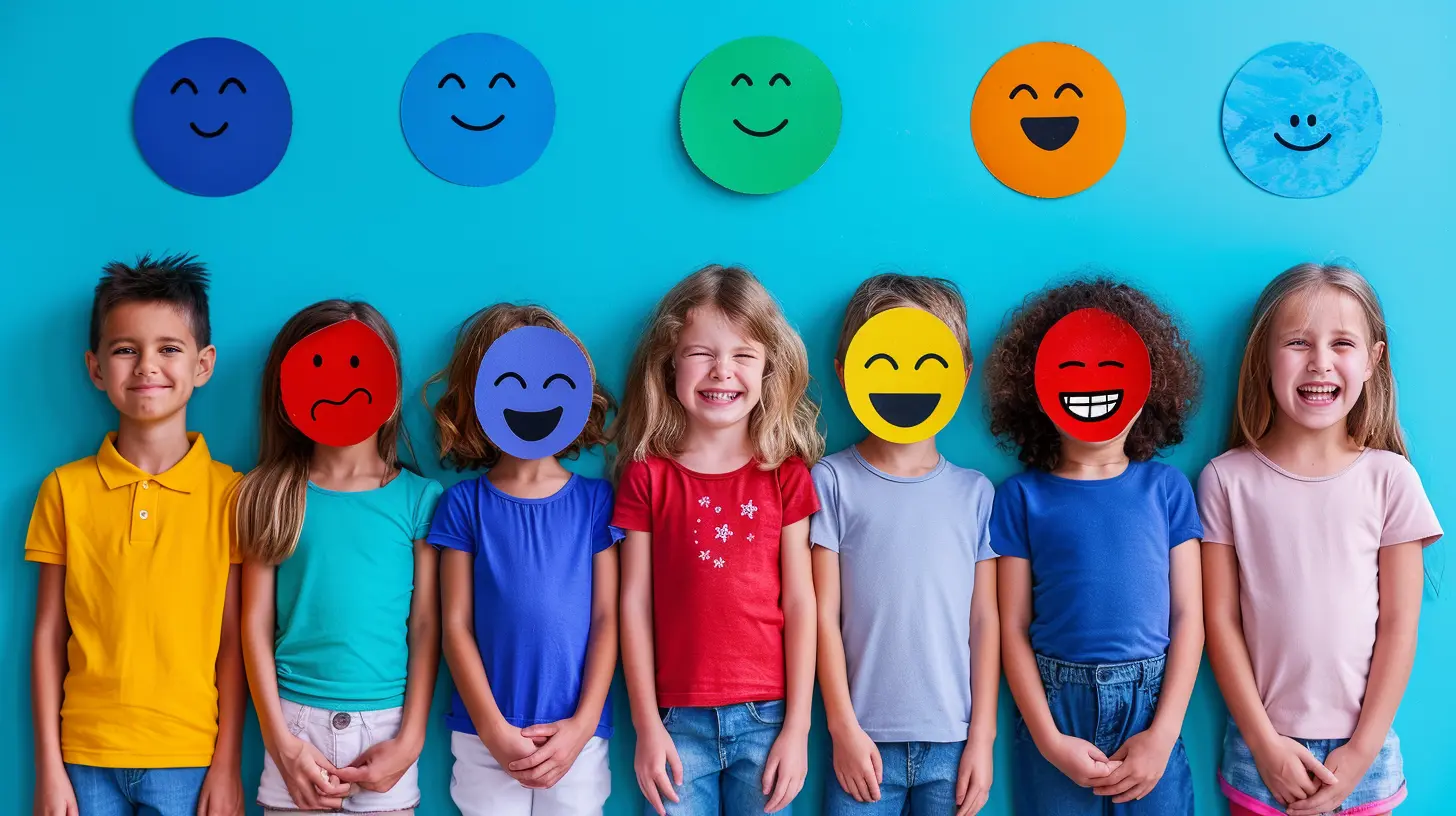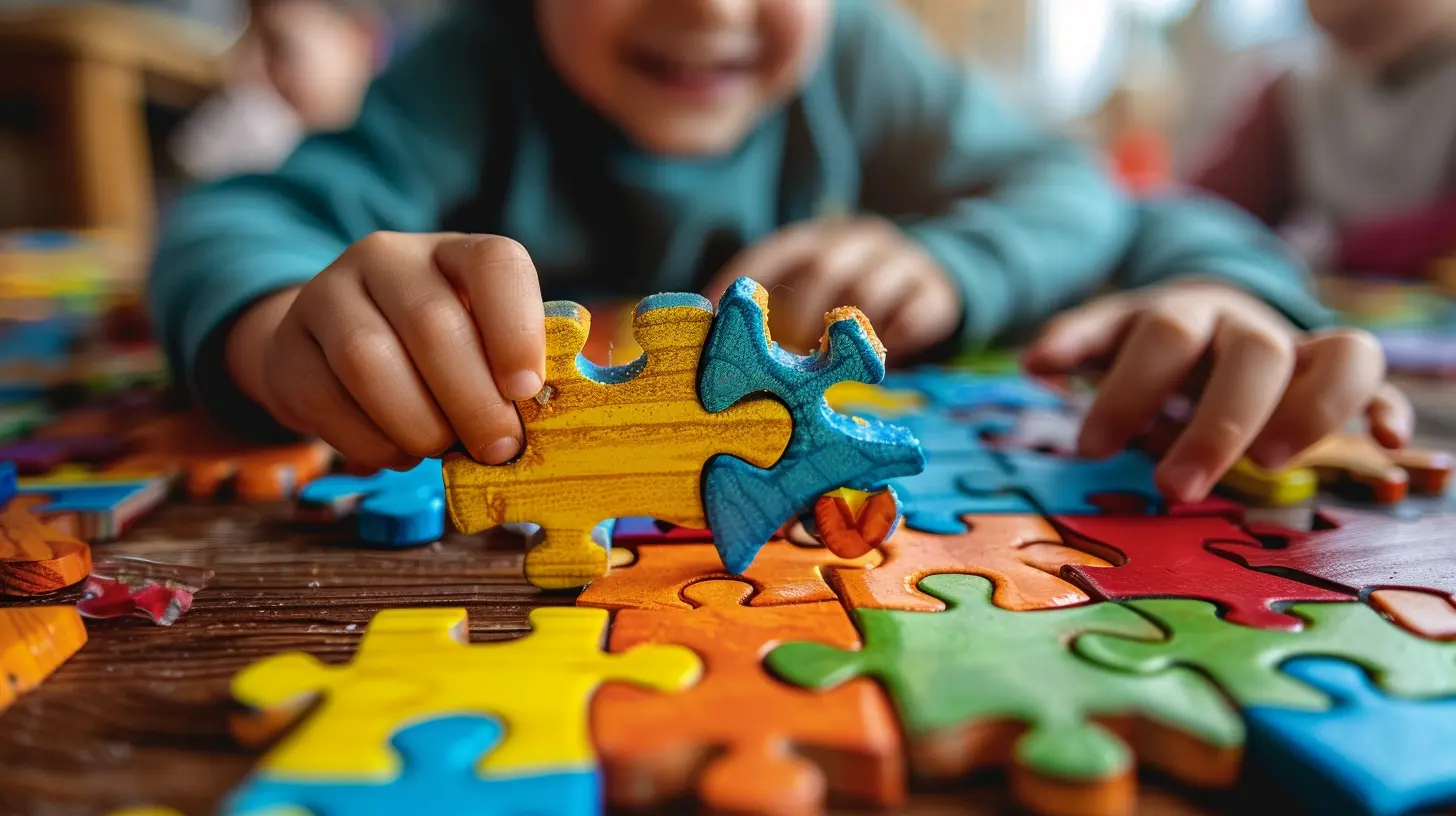31 July 2025
Let’s be honest—emotional intelligence is just as important as academic smarts. Maybe even more so. After all, how we handle our emotions, connect with others, and manage stress can shape everything from our friendships to how we work in a team, and even how we deal with real-life challenges. That’s where Social-Emotional Learning (SEL) comes into play. But here’s the real game-changer (pun intended): SEL doesn’t have to be all serious or boring. In fact, it can be fun. That’s right! Social-emotional learning games are a powerful way to build emotional intelligence in a way that kids (and adults!) actually enjoy.
In this post, we’re diving deep into how these games work, why they’re effective, and the best part—we’ll share some fantastic SEL games to help boost empathy, regulate emotions, and strengthen those oh-so-important social skills.
What Is Social-Emotional Learning (SEL), Anyway?
Before we jump into the games, let’s quickly break down SEL. It's not just another educational buzzword. Social-Emotional Learning is the process through which individuals learn to:- Understand and manage emotions
- Set and achieve positive goals
- Show empathy for others
- Establish and maintain positive relationships
- Make responsible decisions
Sounds like life skills, right? Because that’s exactly what they are.
Now imagine kids learning these skills not through lectures, but through laughter, collaboration, and games that actually get their minds and hearts working together.
Why Use Games for SEL?
So why are games such a perfect match for emotional intelligence development?Simple: Games are engaging by nature. They create safe, low-pressure environments where kids can experiment with social interactions and emotions. They're like emotional playgrounds.
Think about it. In a game, kids might have to:
- Cooperate with teammates
- Handle the frustration of losing
- Take turns and listen actively
- Adapt to unexpected changes
- Express themselves clearly
All of these moments are mini-exercises in emotional growth. The more chances kids have to practice in these ways, the stronger and more self-aware they become.
Now let’s get to the fun part—actual games you can try out.
Top Social-Emotional Learning Games That Actually Work
These games are great for classrooms, homeschooling settings, after-school programs, or even family game nights. They’re simple, powerful, and most importantly—fun.1. Feelings Charades
Best For: Emotional Vocabulary & EmpathyHow It Works:
This one is similar to regular charades, but with a twist. Instead of guessing movie titles or actions, players pick an emotion from a card (e.g., embarrassed, excited, nervous, confident) and act it out without speaking. Other players guess the feeling.
Why It Helps:
This helps kids recognize and name different emotions. The act of stepping into someone else’s shoes—even for a second—builds empathy and emotional awareness.
Pro-Tip: Want to take it a step further? After each turn, ask, “When was a time you felt that way?” This leads to powerful sharing moments.
2. The Compliment Game
Best For: Building Positive Relationships & Self-EsteemHow It Works:
Everyone in the group writes their name on a piece of paper. Then they pass it around, and everyone takes turns writing a genuine compliment or kind word about that person.
Why It Helps:
It not only boosts confidence, but also teaches kids to look for the good in others—a key part of emotional intelligence.
Tip: Make a weekly routine out of it to keep building that emotional muscle!
3. Role-Play Relay
Best For: Decision Making & Perspective TakingHow It Works:
Set up stations or scenarios with different social situations: someone getting left out, a disagreement between friends, having to apologize, etc. Kids move from one station to the next and “act out” how they might deal with each scenario.
Why It Helps:
This sparks conversations about problem-solving and shows there's more than one “right” way to handle a situation. It also helps kids walk a mile in someone else’s emotional shoes.
4. Emotional Bingo
Best For: Emotional Recognition & RegulationHow It Works:
Create bingo cards filled with different emotions (happy, frustrated, proud, silly, etc.). As you call out emotion-related scenarios (“You studied hard and got an A”), kids place a chip on the emotion they think matches.
Why It Helps:
Kids learn to connect emotions to real-life experiences, helping them understand what they—and others—might be feeling in different moments.
You can even reverse it! Show an emotion, and they have to come up with a scenario.
5. Circle of Control
Best For: Managing Stress & AwarenessHow It Works:
Give kids a paper divided into two circles: the inner circle is “Things I Can Control” and the outer is “Things I Can’t.” Ask them to place different life events (e.g., weather, their attitude, someone's comment) into the right circle.
Why It Helps:
This teaches kids to focus energy on what they can influence—an essential part of emotional regulation and resilience.
6. Empathy Pictionary
Best For: Empathy & CommunicationHow It Works:
Players draw a scenario that involves emotions (like being left out, celebrating a win, trying something scary, etc.), and others guess the feeling and the story behind it.
Why It Helps:
It’s a creative way to talk about emotions while sharpening non-verbal communication and empathy.
7. "How Would You Feel If...?" Game
Best For: Emotional Awareness & Perspective BuildingHow It Works:
Create flashcards or use a spinner with different hypothetical situations: e.g., “You lost your pet,” or, “Your friend invited everyone but you to a party.” Players share how they’d feel and why.
Why It Helps:
It encourages emotional honesty and brings up feelings that might not come up in everyday conversation. Plus, it helps kids understand that different people feel different emotions in the same situation.
8. The Freeze Game: Emotion Version
Best For: Emotional RegulationHow It Works:
Play upbeat music and have kids dance around. When the music stops, shout out an emotion, and everyone has to freeze while making that face or body language.
Why It Helps:
Silly? Yes. But it helps kids become more aware of body language and expressions—their own and others'.
9. “I Can” Jenga
Best For: Self-Awareness & ConfidenceHow It Works:
Take a regular Jenga set and write an “I Can” statement on each block. For example:
- I can calm myself down
- I can try again when I fail
- I can ask for help
Each time a player pulls a block, they read it aloud and share a moment when they did that thing.
Why It Helps:
It builds a growth mindset and reinforces a sense of agency and emotional strength.
10. Kindness Catchers (a.k.a. Fortune Tellers)
Best For: Compassion & GratitudeHow It Works:
Remember those origami paper fortune tellers? Use them to promote acts of kindness. Inside each flap, have actions like “Say thank you to someone,” or, “Write a kind note,” or “Help out without being asked.”
Why It Helps:
Simple actions lead to big emotional shifts. When kindness becomes a habit, emotional intelligence grows naturally.
Tips for Facilitating SEL Games
You don’t need to be a therapist or counselor to guide these games. But a few things can help:- Create a safe space – Let kids know that it’s okay to feel sad, mad, excited, or scared.
- Model emotional expression – Share your own stories and feelings.
- Listen actively – When kids share, reflect back what they said. It shows their emotions matter.
- Debrief after games – Ask what they learned, felt, or noticed.
These small conversations go a long way in deepening the impact of the games.
The Big Picture: Why Emotional Intelligence Matters
In a world that often feels chaotic, emotional intelligence is the compass that keeps us steady. It’s what helps us connect, recover from setbacks, express ourselves, and treat others with kindness and understanding.And just like any skill, EI (Emotional Intelligence) gets stronger with practice. These games are more than just fun—they’re opportunities for lifelong learning.
Whether you're a parent, a teacher, or someone working with kids in any capacity, adding SEL games to your toolkit could be the emotional vitamin boost your group needs. You're not just teaching kids to manage emotions—you’re helping shape kind, resilient humans.
And that? That’s a win for everyone.
Final Thoughts
Social-emotional learning doesn't have to be complicated. With the right games, it becomes second nature—something kids look forward to, rather than a lesson they tolerate. If you can make them laugh, feel, share, and grow all at the same time, you’re doing it right.So get out there. Make it playful. Make it powerful. And most of all—make SEL part of every day.








Bennett Dorsey
Who knew leveling up emotional intelligence could be as fun as leveling up in a video game? Time to trade tears for high-fives!
November 25, 2025 at 12:12 PM